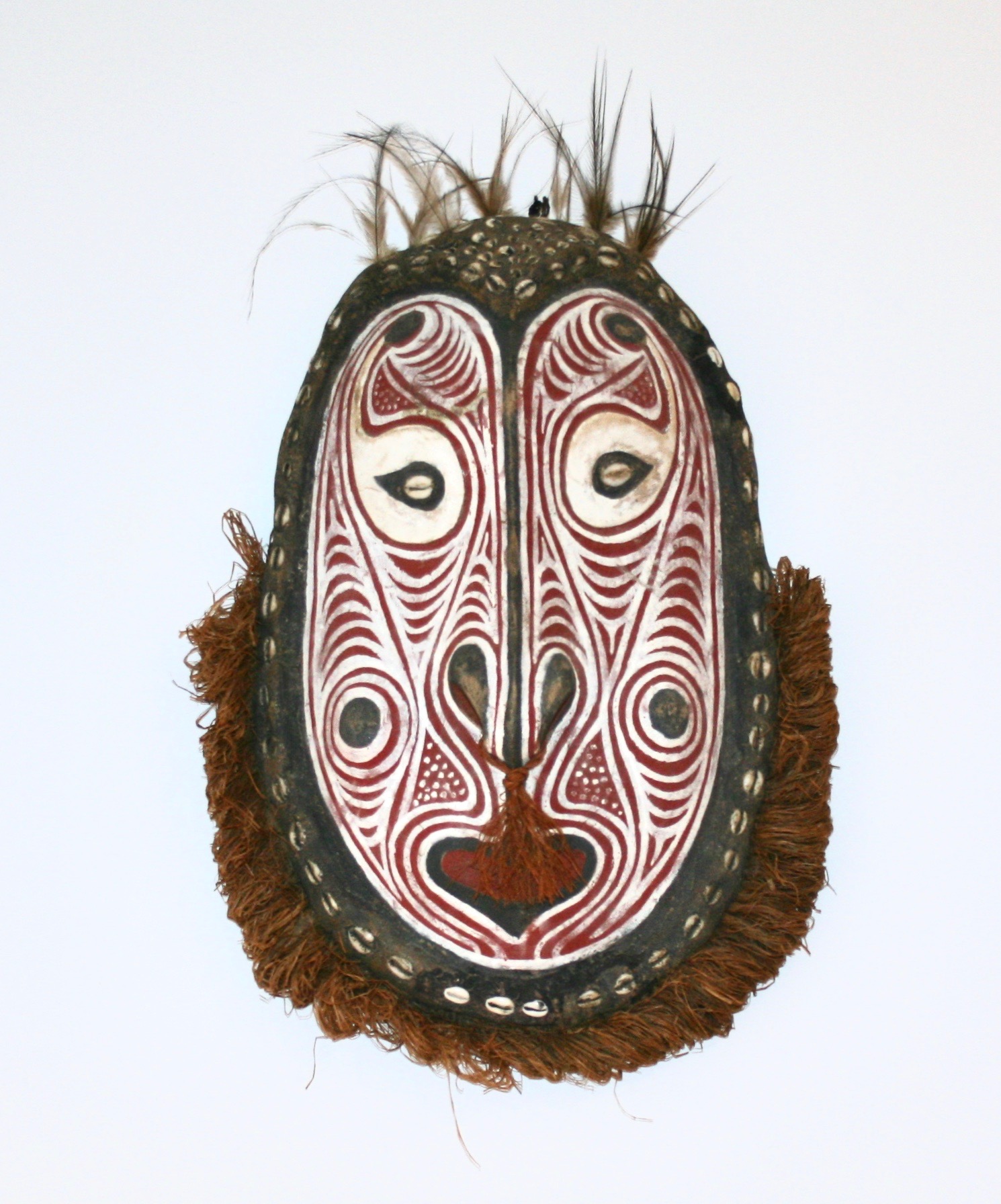

Title: Antique Tribal Oceanic Papa New Guinea Wooden Mask
Shipping: $29.00
Artist: N/A
Period: N/A
History: Ancient Art
Origin: North Australia & Oceana > Papua New Guniea
Condition: Very Good
Item Date: N/A
Item ID: 109
A wonderful Papa New Guinea wooden mask. Truly a spectacular piece in Scope and design. Carved by a master woodcarver from a single piece of wood and decorated with traditional pigments. It would be a great addition to any Oceanic or tribal mask collection or engaging Stand alone accent piece. Archaeological evidence indicates that humans first arrived in Papua New Guinea around 42,000 to 45,000 years ago. They were descendants of migrants out of Africa, in one of the early waves of human migration. The variety and beauty of the masks of Melanesia are almost as highly developed as in Africa. It is a culture where ancestor worship is dominant and religious ceremonies are devoted to ancestors. Inevitably, many of the mask types relate to use in these ceremonies and are linked with the activities of secret societies. The mask is regarded as an instrument of revelation, giving form to the sacred. This is often accomplished by linking the mask to an ancestral presence, and thus bringing the past into the present. As a culture of scattered islands and peninsulars, Melanesian mask forms have developed in a highly diversified fashion, with a great deal of variety in their construction and aesthetic. In Papua New Guinea, six-metre-high totem masks are placed to protect the living from spirits; whereas the duk-duk and tubuan masks of New Guinea are used to enforce social codes by intimidation. They are conical masks, made from cane and leaves.
A mask is an object normally worn on the face, typically for protection, disguise, performance, or entertainment. Masks have been used since antiquity for both ceremonial and practical purposes, as well as in the performing arts and for entertainment. They are usually worn on the face, although they may also be positioned for effect elsewhere on the wearer's body. More generally in art history, especially sculpture, "mask" is the term for a face without a body that is not modelled in the round (which would make it a "head"), but for example appears in low relief.
Link: https://en.wikipedia.org/wiki/Mask
The use of masks in rituals or ceremonies is a very ancient human practice across the world, although masks can also be worn for protection, in hunting, in sports, in feasts, or in wars – or simply used as ornamentation. Some ceremonial or decorative masks were not designed to be worn. Although the religious use of masks has waned, masks are used sometimes in drama therapy or psychotherapy.
One of the challenges in anthropology is finding the precise derivation of human culture and early activities, with the invention and use of the mask only one area of unsolved inquiry. The use of masks dates back several millennia. It is conjectured that the first masks may have generally been used by primitive people to associate the wearer with some kind of unimpeachable authority, such as "the gods" or to otherwise lend credence to the person's claim on a given social role.
The oldest masks that have been discovered are 9,000 years old, being held by the Musée "Bible et Terre Sainte" (Paris), and the Israel Museum (Jerusalem). Most probably the practice of masking is much older – the earliest known anthropomorphic artwork is circa 30,000–40,000 years old[8] – but insofar as it involved the use of war–paint, leather, vegetative material, or wooden masks, the masks probably have not been preserved (they are visible only in paleolithic cave drawings, of which dozens have been preserved). At the neanderthal Roche–Cotard site in France, a flintstone likeness of a face was found which is about 35,000 years old, but it is not clear that it was intended as a mask